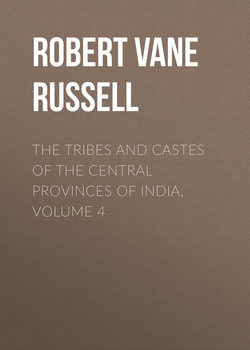Читать книгу The Tribes and Castes of the Central Provinces of India, Volume 4 - Robert Vane Russell - Страница 43
Part II
Articles on Castes and Tribes
Kumhār—Yemkala
Vol. IV
Kurmi
4. Exogamous groups
ОглавлениеEach subcaste has a number of exogamous divisions and these present a large variety of all types. Some groups have the names of Brāhman saints as Sāndil, Bhāradwaj, Kausil and Kashyap; others are called after Rājpūt septs, as Chauhān, Rāthor, Panwār and Solanki; other names are of villages, as Khairagarhi from Khairagarh, Pandariha from Pandaria, Bhadaria, and Harkotia from Harkoti; others are titular, as Sondeha, gold-bodied, Sonkharchi, spender of gold, Bimba Lohir, stick-carrier, Banhpagar, one wearing a thread on the arm, Bhandāri, a store-keeper, Kumaria, a potter, and Shikaria, a hunter; and a large number are totemistic, named after plants, animals or natural objects, as Sadāphal, a fruit; Kathail from kath or catechu; Dhorha, from dhor, cattle; Kānsia, the kāns grass; Karaiya, a frying-pan; Sarang, a peacock; Samundha, the ocean; Sindia, the date-palm tree; Dudhua from dudh, milk, and so on. Some sections are subdivided; thus the Tidha section, supposed to be named after a village, is divided into three subsections named Ghurepake, a mound of cowdung, Dwarparke, door-jamb, and Jangi, a warrior, which are themselves exogamous. Similarly the Chaudhri section, named after the title of the caste headman, is divided into four subsections, two, Majhgawān Bamuria, named after villages, and two, Purwa Thok and Pascham Thok, signifying the eastern and western groups. Presumably when sections get so large as to bar the marriage of persons not really related to each other at all, relief is obtained by subdividing them in this manner. A list of the sections of certain subcastes so far as they have been obtained is given at the end of the article.
Pounding rice
